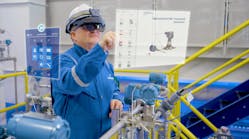Preventive maintenance has long been the industry standard when it comes to running operations and equipment effectively and reducing the amount of downtime or machine malfunctions. It’s a critical component of the factory ecosystem and ultimately helps improve the overall health of it. Like the annual inspection we all get on our vehicles, regular maintenance procedures on industrial equipment contributes to ensuring greater asset life extension.
But is that enough?
Advancements in predictive maintenance suddenly make preventive maintenance look less attractive to industrial leaders. Where preventive maintenance helps avoid some breakdowns, at the end of day, it’s tied to a strict schedule. Unfortunately, breakdowns don’t follow a schedule. In fact, a study by Boeing found that 85% of all equipment failed at random no matter how much preventive maintenance measures were applied to equipment. Predictive maintenance, meanwhile, is a true value creator in that it helps companies stay more profitable, removing the threat of random failure, hence unplanned downtime and lost profits.
The problem with preventive maintenance
ARC Advisory Group reports 82% of failures cannot be avoided with traditional equipment monitoring. That’s a core issue with relying only on a preventive maintenance approach. If it happens to uncover an issue, that’s great —it can be fixed before it becomes a major production impediment. However, it’s also risky to assume equipment won’t break down in between scheduled maintenance. Equipment follows no timeline, breakdown happens at random, so a preventive maintenance schedule, in theory, doesn’t exactly provide reliability. There is no assurance in following a simple calendar schedule. Calendar maintenance doesn’t change or improve the unplanned failure rate.
Additionally, a large portion of preventive maintenance uncovers problems that already exist. When caught in time, this approach can prevent those problems from becoming larger or leading to failure. But that’s the very reason preventive cannot be king on the maintenance front —sometimes problems must already exist to reap the benefit of preventive maintenance. There’s also the problem of over-correction or unnecessary maintenance when relying on the calendar. Operators abiding by scheduled maintenance might change, for example, the oil in a machine more often than what is needed to keep the machine running properly. That’s like throwing money, time and resources out the window, maintaining equipment that doesn’t need attention in the first place. Preventive maintenance is not the approach of the future, especially when we have so much modern technology available to gain deeper insights into existing equipment and assets (asset performance management).
When a preventive approach was the only approach, it certainly helped organizations stay ahead of or on top of equipment problems but never to the degree that organizations require to be at their most effective. With the constant market fluctuations that exist in the process industries, it’s vital for organizations to be operating with increased efficiency, wherever possible. Unfortunately, banking on preventive isn’t a true safeguard against equipment degradation or unplanned downtime. Businesses cannot rely on it if they are trying to run leaner operations.
The case for predictive maintenance
Predictive maintenance completely changes the game for industries and makes maintenance a true value creator for businesses, because it ultimately optimizes asset performance through increased reliability. Through a combination of advancements in technology, like low-touch machine learning, prescriptive analytics and the internet of things (IoT,) the ability to extract value in historical design and operations data is now a reality —and it’s this type of data that best helps to predict where and when failures will occur in plant processes, through modeling and specific failure pattern recognition.
Failure pattern recognition that learns over time (new patterns, anomalies), is key in the predictive approach. Instead of taking educated guesses on maintenance issues through observing models, pattern recognition software components can achieve this reliably, without a human counterpart, and are able to differentiate between normal and abnormal behavior, measuring subtle behavioral patterns that lead up to failures. These are behavioral patterns the human eye can’t see, and they are transferable across assets (which, in the past, had been a major hurdle in using asset behavior models). This dual approach allows businesses to ensure the detection of issues earlier and with much more accuracy than the more rudimentary, early-stage predictive technology would allow. It also eliminates any possibility of human error. Additionally, when a recognition pattern software component detects looming failures, which is often weeks or months in advance of the actual failure occurring, systems can automate instant notifications and alerts to appropriate personnel or operators.
Predictive maintenance is setting the stage for a world that doesn’t break down while also helping companies push their assets and equipment to the limits of performance. Equipment reliability makes plant operations safer and more efficient because it negates the risk of unexpected circumstances or failures. If a machine malfunction is significant enough, it can put workers lives at risk. That, alone, should be a key reason to gravitate toward a predictive maintenance model. Another major reason to step away from a preventive approach is the sheer cost of unplanned downtime —businesses can lose millions upon millions of dollars in just a few days of halted operations. According to the National Association of Manufacturers, 10% of profit losses in manufacturing can be attributed to breakdowns that cost $1.4 trillion annually. With assurance of equipment reliability, it’s also safe to work the equipment as hard and as fast as it’s able to perform.
A great example of predictive maintenance in action is in Italian refinery, Saras. With 30 days of lead time, two major breakdown events were accurately predicted: high outlet temperature failure and instrument failure causing valve replacement. Another company, Borealis, saw 27 days of advanced warning of a central valve failure using the predictive approach. So, not only does predictive maintenance give accurate warning ahead of failure events, but that warning comes so far in advance of the event that operators have more time to make determinations about how to best approach individual situations.
How to implement the predictive approach
Making a choice to fully digitize the maintenance model is a great first step, of course, but there are key areas that need consideration for any business making this decision. First, it’s important to get C-Suite buy-in. Everyone must be on board with major operational overhauls. From there, seek out change agents or people who are eager to lead initiatives to get predictive technology fully incorporated into plant processes.
There are also more tactical checkpoints in implementing new technology. It’s important to find software that is easy to use and intuitive, not something that is going to cause more headaches for operators. Software that has the capability for transfer learning is crucial, too, as it enables failure patterns to be shared across multiple assets. Repeatable and proven ROI is another vital factor in choosing predictive software, as well as ample lead time. The software that provides businesses with the most advanced warning of failure to take corrective action is, most certainly, the best choice. As they say, "time is money. "
Keeping maintenance trapped in the confines of a calendar won’t cut it anymore as competition will increasingly turn to the predictive approaches and will gain an immediate edge. Advancements in technology bring the industrial world into modern times, making so many processes more efficient and manageable. Maintenance issues can quite literally make or break a business depending on the management of those issues. Luckily, technology has come far enough to finally serve as a tried and true safeguard against unexpected situations in the plant environment.
Robert Golightly is senior manager for asset performance management (APM) product marketing at AspenTech. Previously, he managed the product marketing function for the company’s advanced process control (APC) and manufacturing execution systems (MES) product lines. Golightly’s professional background includes work for SaaS provider FineTooth as well as Pavilion Technologies.



